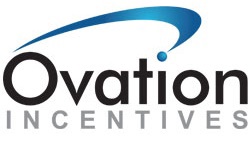Sociometric badges
Wearable electronic badges that automatically measure things like the amount of face-to-face interaction, conversation time, physical proximity to other people and activity levels, using social signals such as vocal features, body motion and location. They are used to measure patterns of behaviour, identify how well people collaborate, and enhance social interactions. Provider Humanyze claims using the tool can help with teamwork, engagement, space planning and process improvements.
Fitness trackers
There’s a pretty high chance you are wearing one of these right now – a Fitbit, Jawbone, Apple Watch or similar. They can monitor step count, activity levels, sleep quality and heartrate. Connected apps allow users to track their calorie intake and weight. In the workplace such devices are used to encourage employees to exercise more (sometimes via workplace competitions) and also to provide employers with data to inform wellbeing strategy decisions. Third party health providers can also analyse such data to calculate insurance costs and, if necessary, suggest interventions.
Language processing
Sentiment analysis tools mine user-generated data, such as emails and social media, for keywords or phrases. These phrases can then build a picture of how someone feels. In the workplace this could be used to build a picture of engagement or flag up potential problems. Crystal Knows is a tool that mines publicly-available information to build a profile of an individual that then predicts their communication preferences. It claims to help teams interact more effectively. Founder Drew D’Agostino says: “There’s so much data in the public domain it’s inevitable that it will be used by employers.”
EEG monitors
A bit of a mouthful this one: electroencephalography (EEG) is an electrophysiological monitoring method to record the electrical activity of the brain. In workplace experiments it has been used to send wearers a pulse reminding them to sit up straight. Such tools have also reportedly been used in construction companies, including Crossrail, to monitor employees for drunkenness or fatigue.
Telematics
Primarily used in vehicles, telematics can monitor and record how far and often an individual drives, as well as keeping a note of their personal driving style. Logistics companies use telematics to improve efficiency, and they can also be deployed in fleet to keep track of safety and any potential insurance issues.
RFID tags
Microchip implants used to identify humans, either inserted into a regular ID badge or into the skin. They can be used to track movements and time management, and have been tried in hospitals to improve communication and workforce planning. Examples include Hitachi’s Business Microscope.
Further reading
The ethics of gathering employee data
The HR view on employee data gathering
DNA testing in the workplace








